From Kobane to Raqqa
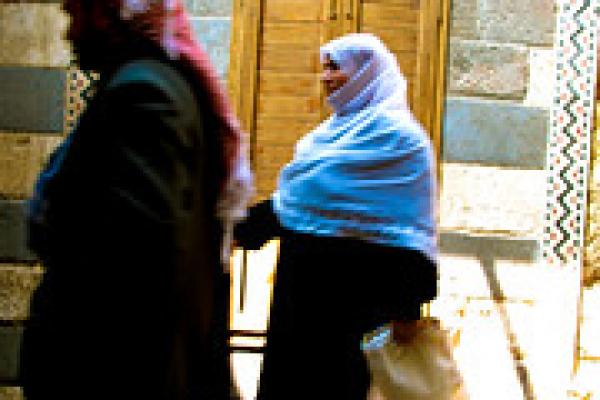
By Alex Rand
Background
‘Rojava’ can be a nebulous term. Rojava references West Kurdistan, a series of Kurdish majority cantons spread throughout Syria’s northeast, north, and northwest. This has since expanded to reference nearly a quarter of Syria. Most territory east of the Euphrates river has been claimed now by the Kurdish-led Syrian Democratic Forces (SDF), with some enclaves to the west in Manbij, Aleppo, and the Afrin Canton. This region is also incredibly diverse, being populated not only by Kurds but by Arabs, Turkmen, and Assyrians as well. Rojava is an important piece to understanding the broader jigsaw puzzle that is the Syrian Civil War. It could potentially be an essential factor in shaping the end of the conflict as well.
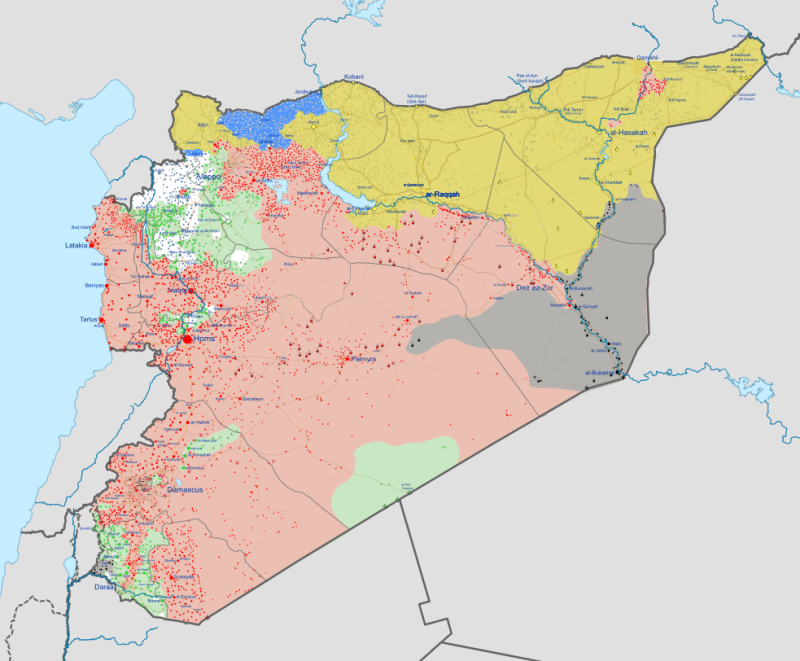
“Syrian Civil War Map” by Ermanarich. Wikipedia. CC BY-SA 4.0
This map represents Syria’s territorial division. SDF/Kurdish areas are represented in yellow, the Assad regime in red, FSA in green, Turkish-backed rebels in blue, ISIS in gray and Jabhat Fattah Al-Sham in White
Beginnings: 2012 - 2015
When protests broke out in 2011, the Kurdish regions of Syria remained relatively peaceful for a time. For decades the Syrian Kurds, approximately 15% of Syria’s pre-war population1, had been deprived of basic civil rights, many of them being stripped of Syrian citizenship. In order to keep the Kurds from joining the growing revolt, the Assad government gave 200,000 Kurds Syrian citizenship2. In response to growing pressure from rebel forces, the Assad regime removed its forces from several Kurdish-majority areas in order to focus on more pressing military situations. This vacuum left by the government led to the surfacing of previously underground Kurdish political parties, most notably the Democratic Union Party (PYD) and the Kurdish National Council (KNC). These parties joined and formed the Kurdish Supreme Council (KSC) which then established the People’s Protection Units, or YPG. With the government now gone, the Kurds were left in control of Afrin in Syria’s northwest, Kobane in Syria’s north, and Amuda in Syria’s northeast. In 2013, the KNC was dissolved and the PYD moved to establish a coalition government (TEV-DEM) based on direct, grass-roots democracy that was inclusive of multiple ethnicities, languages and faiths3. In early 2014, the three cantons (Kurdish-controlled areas) declared their autonomy and approved the Constitution of Rojava.
Gradually, rebel groups had made gains in Syria’s north and essentially encircled the individual Kurdish cantons. This presented few issues until the rise of ISIS in late 2013 and early 2014. The group, also known as Daesh, made rapid territorial gains, routing the more moderate and secular militias of the Free Syrian Army (FSA). Soon the Kurds found themselves encircled and besieged by the Salafist group. The Kurdish city of Kobane, on Turkey’s southern border, became encircled in autumn 2014. Gradually the Kurds lost ground and civilians fled to Turkey. Despite the grim situation the tide began to turn in January of 2015. Coordinated and sustained air strikes by US and coalition air forces, combined with Kurdish gains on the ground, began to steadily drive Daesh from Kobane. Iraqi Kurdish fighters, or Peshmerga, were even ferried through Turkey to help their beleaguered Syrian comrades4. Once the siege was broken in spring of 2015, the YPG decided it was time to go on the offensive against the Islamic State.
Counter Offensives: 2015 - 2017
In the summer of 2015, the YPG launched its Tel Abyad offensive, connecting the Kobane and Amuda regions and creating an area of Kurdish control that ran almost the entirety of Turkey’s southern border. As the Kurdish YPG made more advances they began to enter regions that were not traditionally Kurdish. The Syrian Democratic Forces, or SDF, was founded in late 2015 and was comprised of the Kurdish YPG, FSA factions that had been cooperating with the Kurds, as well as minority Syriac and Turkmen militias. While being majority Kurdish, the SDF has since grown to include nearly 40% non-Kurdish militias5. After the Tel Abyad offensive the SDF looked to connect the rest of its territory to the Afrin canton in Syria’s northwest. Launching the Manbij offensive in 2016, the SDF crossed the Euphrates and attempted to connect its territories. This prompted a Turkish intervention into Syria, code-named ‘Operation Euphrates Shield’, in August of 2016. Turkey views any Kurdish success in Syria as a danger to itself, one that risks stirring up its own Kurdish issues. If the Kurds had connected their territory, the entirety of Turkey’s southern border from Iraq to Syria would have been under Kurdish control, something they simply could not allow. The Turks and their FSA allies moved in between the Kurdish territories, cutting off any hope of connecting the two. Since then the Turks and Kurds have had a confrontational relationship, often stopping short of all-out war.

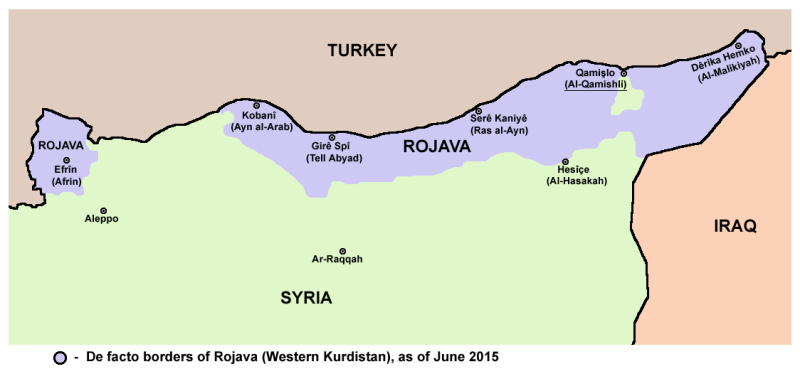
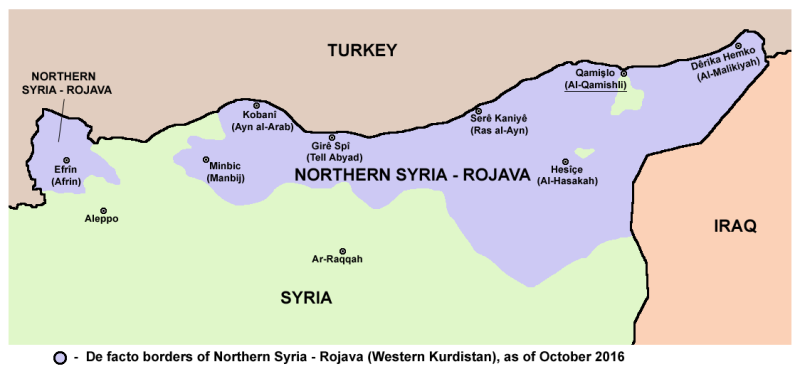
Maps Showing De Facto Borders of Northern Syria. Panonian. Wikimedia. Public Domain CC0
Run on Raqqa & Dash for Deir Ez-Zour: 2017
Since the Turkish intervention the SDF has turned its attention south, launching two offensives. The first, launched in November of 2016 aimed to capture Islamic State’s de-facto capital of Raqqa and its surrounding country-side. For months, the SDF advanced, fought, and encircled IS positions before finally besieging the city itself. As the noose gradually tightened, open and rapid country-side advances became mired in grinding urban warfare characterized by booby-traps, snipers, constant airstrikes, and ambushes. As the battle dragged on, it became apparent that the IS fighters left in Raqqa were primarily foreign fighters who had no personal connection to the city. They were more than willing to destroy as much infrastructure and kill as many civilians as they could before their ultimate defeat. Victory was finally achieved on October 20th, 20176. The fight for the city was long and brutal, resulting in near total destruction of the city and scores of civilian casualties.
The second offensive, still currently underway, is focused on routing the remnants of ISIS from the oil-rich Deir Ez-Zour province of eastern Syria. Launched in September of 2017, the SDF has made significant gains against the remnants of Daesh and has gained control of a series of oil-rich areas. However, this success has come with some dangerous side-effects. The Assad regime, with Russian air support, Iranian advising and logistics, and Hezbollah militia support, has been conducting an offensive in Deir Ez-Zour as well. Both sides are attempting to expand their territory as quickly as possible to both deny the opposition the province’s oil resources and position themselves for the future of the conflict. These two factions, which have refrained from major confrontations throughout the war, are coming dangerously close to one another. As they draw closer, so do their allies, which brings American and Russian interests into close quarters, breeding potential for confrontation. This brings Rojava’s role in Syria into sharp focus.
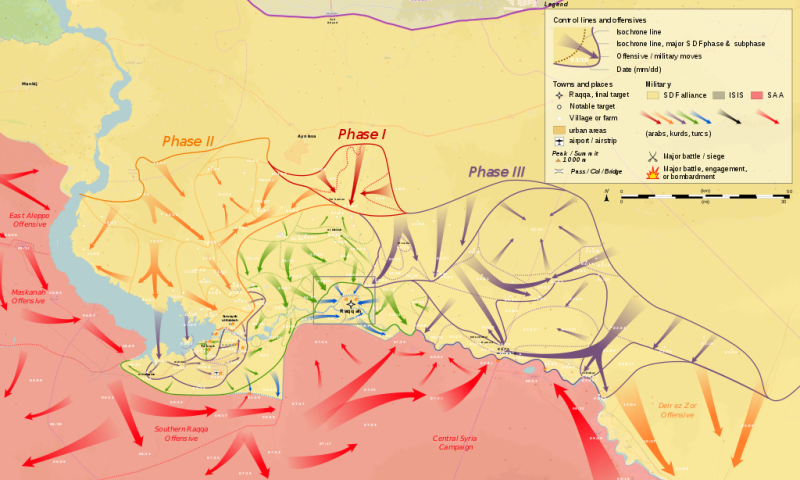
Northern Raqqa Offensive. MrPenguin20. Wikimedia. CC BY-SA 4.0
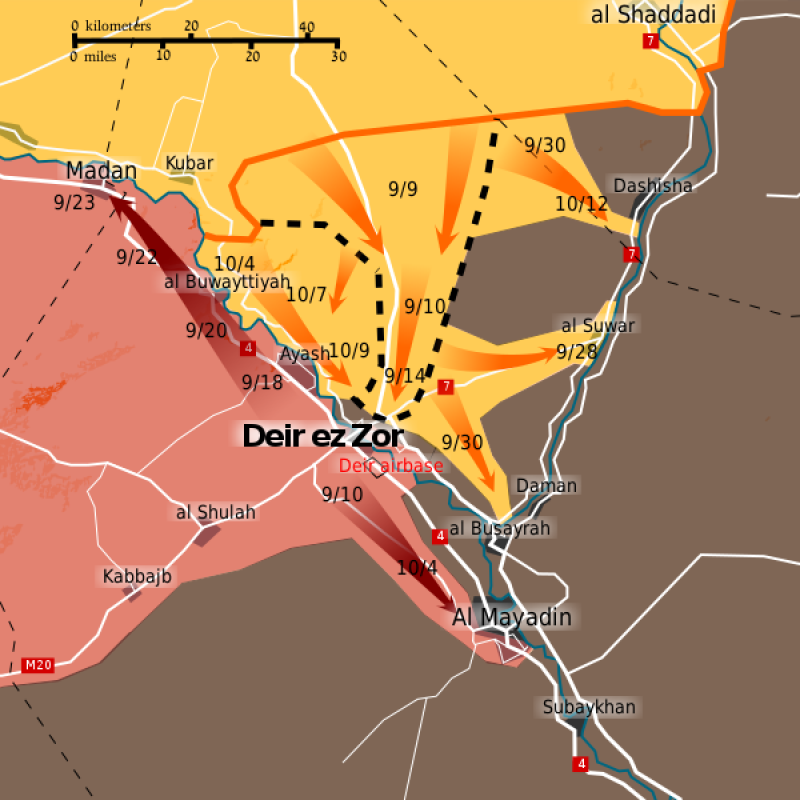
Progress of the Offensive by Early October 2017. Rr016. Wikimedia. CC BY-SA 4.0
As the battle against the Islamic State begins to wind-down, questions are being raised about the immediate and long-term future of the SDF and Democratic Federation of Northern Syria (DFNS). There are several important things to focus on; Kurdish focus on autonomy over independence, American influence on the SDF and DFNS, Russian influence on both the Syrian regime and the SDF to a lesser extent, and an expressed willingness among the leadership of the SDF to work with the Syrian regime. All of these will play significantly into the future of the Democratic Federation of Northern Syria, and potentially the future of the Syrian Civil War.
Autonomy over Independence
The Kurds and their allies are not seeking an independent state from Syria. Unlike their Iraqi counterparts, the DFNS seeks the establishment of a federal state within the framework of Syria’s borders. Haidar Khezri, a senior fellow at the Center for the Study of the Middle East at Indiana University, affirms this stance;
“Especially with the fallout from the referendum in Iraqi Kurdistan, autonomy within a highly-federalized framework is far more likely to succeed.”
Indeed, the Kurds of Syria, despite their effectiveness as a fighting force, may not be capable of making the leap to independence in their current situation. Iraqi Kurdistan had more diplomatic recognition, more military might, more revenue and resources than the Kurdish areas of Syria. Even with all these advantages their referendum resulted in nothing but diplomatic, economic, political, and military losses. Considering these lessons from Iraqi Kurdistan the Kurds of Syria are careful to not bite off more than they can chew. Additionally, Turkey, which shares a long stretch of its southern border with Rojava and has already used military force against the Kurds in Syria, could potentially view Kurdish successes as a mortal threat regardless of Kurdish intentions to achieve autonomy rather than independence. This places the two US allies in a precarious balancing act, the Kurds not wanting to invite Turkish aggression and the Turks not wanting to strain relations with the US.
American Influence
Speaking of the US, the future of its relationship is in question as the conventional campaign against IS draws to a close. Some are concerned that the US will lose interest in supporting the SDF once it’s primary policy objective in achieved. This does not seem to be the case. With increasing Russian and Iranian influence in Syria it is unlikely that the US will yield its chief ally which acts as its primary conduit for influencing the course of the war and its subsequent settlement. While Mr. Khezri predicts a drop in military support post-IS, he believes that the US will continue supporting the SDF so long as it doesn’t risk the fragile cooperation it has cultivated with Assad’s regime, much to the chagrin of Turkey.
Russians in the Middle
The most interesting and critical developments in the war concerning the SDF and Assad’s regime are linked by Russian influence. For much of the war the Euphrates river has acted as a barrier, separating the SDF and regime forces. Both sides have seemed eager to avoid confrontation with one another in what Mr. Khezri has described as “an economy of effort”. With the campaign for Deir Ez-Zour, this arrangement has become strained, with occasional strikes being traded.
This brings a question to mind; why have these two factions avoided each other for so long, and what does that mean for Syria? Mr. Khezri, an adjunct professor in the Department of Eurasian Studies at Indiana University, believes that Russia is acting as the moderating influence in this equation. Russia seems to be persuaded that the Kurds have an important role to play in the resolution of this conflict. Russian support of the SDF, similar to its support of the KRG in Iraq, is meant to increase its access and influence in the region. As a result, the Russians have acted as a restraining influence on the Assad regime, potentially exerting pressure to avoid confrontation with the SDF. This patronage of Kurdish efforts in the Middle East also makes Turkey an uneasy Russian partner as they have, at times, pressured Russia to exclude SDF negotiators from the peace talks in Astana, the capital of Khazakstan.
Mazlum, Moallem and the All-Syrian Congress
This important role could come in the form of regime-SDF cooperation. This interest in cooperation has been expressed by two important figures, Mazlum Kobane and Walid Moallem. Mazlum Kobane is the 45-year-old chief commander of SDF forces and, as such, is the principal interlocuter for the SDF. He helmed the Raqqa offensive and has expressed an interest in a political career beyond his current military post. In an interview with Al-Monitor, Kobane expressed a willingness to work with the regime in exchange for the creation of a federal system in Syria which incorporates the already existing Democratic Federation of Northern Syria7. This is the first time the SDF has expressed any interest in engaging the regime. This is particularly interesting because the sentiment has been reciprocated by the Assad regime by foreign minister Walid Moallem. Moallem stated that the Kurdish desire for autonomy in the framework of a federal system “is negotiable and can be the subject of a dialogue”8.This is an interesting change of pace from a regime that has refused to yield any power to oppositions groups. Mr. Khezri says that it’s entirely possible that the two sides could work together but that he “doubts that it will be free of violence or political pressure levied at each other.”
Since both sides have indicated an interest in working together it begs the question in what form this cooperation will take shape? The solution, as proposed by Russia, is called the All-Syrian National Dialogue Congress, here referred to as the All-Syrian Congress for short. The congress would, in theory, represent all the groups of Syria, both large and small. This solution also includes a federal system for Syria and would incorporate the already established cantons of the Democratic Federation of Northern Syria. What is unclear is how the cantons would be organized, whether along ethnic, sectarian, or geographic boundaries. The PYD, the largest political party in Rojava has proposed a geographic federal system with four federal states, one in the north, one in the desert, one along the Mediterranean coast, and one in the south9. While the system seems good in theory, the application could prove difficult for the war-torn country. The US has expressed mild approval for the federal system, stating “If Syrians agree on a federal system, it is up to them. But the US opposes the establishment of areas under a semi-independent rule threatening Syrian unity. It creates isolated areas or cantons within Syria. The US does not back the federal system in Syria, unless the Syrian people are all for it.”10. It appears that this federal system, and the All-Syrian Congress, are increasingly being touted by Russia, and the US to a lesser extent, as a potential political solution to the Syrian Civil War.
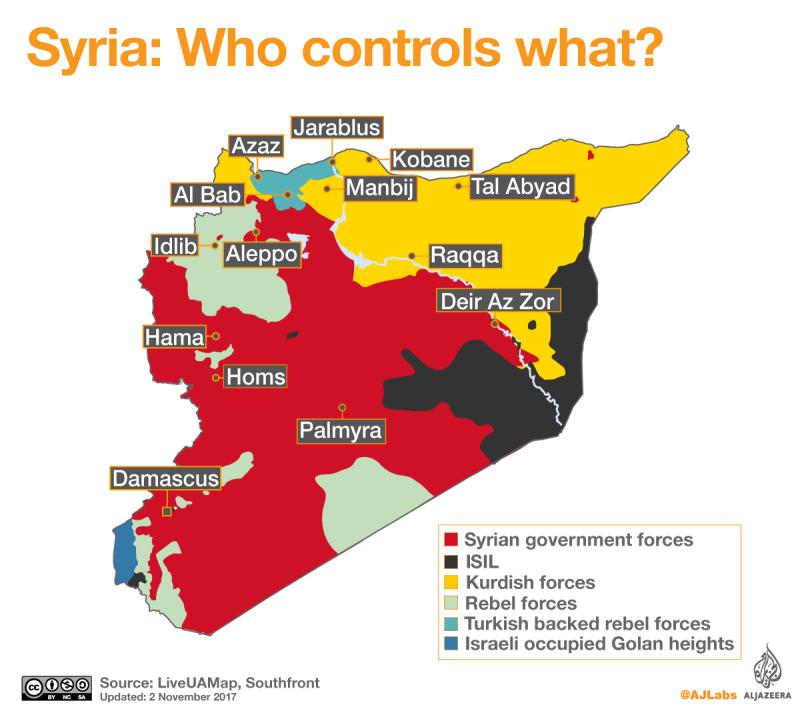
"Syria: Who Controls What?" by Al-Jazeera. 2 November 2017. Al-Jazeera English. CC BY-NC-SA 4.0
This map is the most up-to-date representation of Syria's territorial divisions. It includes the most recent gains by the SDF and the Syrian government.
Conclusion
The Kurds of Syria have proven themselves to be major players in the country’s civil war, setting themselves up to be major players in the conflict's eventual resolution. They have time and again proven their effectiveness as a fighting force against the Islamic State and have established themselves as arguably the most powerful opposition force in the country. With the fight against Islamic State coming to a close, their eyes are fixed upon securing their future in Syria. With Russian patronage and support, the federal system proposed by the Kurds could potentially prove to be the blueprint for crafting a lasting political solution to the conflict. While it would be naïve to see it as a perfect solution, it is certainly a step above the alternative of returning Syria to its pre-war political state, a task which is nigh-impossible. How Russia, America, and their respective allies proceed in the coming months and years could see the Kurds play a major role in shaping the conflict’s resolution.
A special thanks to the insights of Mr. Haidar Khezri, adjunct professor of the Department of Eurasian Studies and Senior Fellow at the Center for the Study of the Middle East at Indiana University.
[1] http://www.aljazeera.com/news/2017/09/syria-granting-kurds-greater-autonomy-170926121821968.html
[2] https://www.gfbv.de/en/news/syria-wants-at-last-to-naturalize-200000-stateless-kurds-2918/
[3] http://harvardpolitics.com/online/radical-leftism-and-militant-islam/
[4] https://www.washingtonpost.com/world/middle_east/iraqi-kurds-join-fight-to-break-islamic-state-siege-on-syrian-town/2014/10/30/8d846f30-6026-11e4-91f7-5d89b5e8c251_story.html?utm_term=.c2a7cddc0108
[5] http://www.rudaw.net/NewsDetails.aspx?pageid=200200
[6] http://abcnews.go.com/International/us-backed-syrian-force-declares-victory-isis-capital/story?id=50605976
[7] https://www.al-monitor.com/pulse/originals/2017/09/turkey-kurdish-commander-says-us-should-stay-in-syria.html
[8] http://www.aljazeera.com/news/2017/09/syria-granting-kurds-greater-autonomy-170926121821968.html
[9][10] https://www.al-monitor.com/pulse/originals/2017/10/syria-federal-state-kurds-turkey-russia.html
